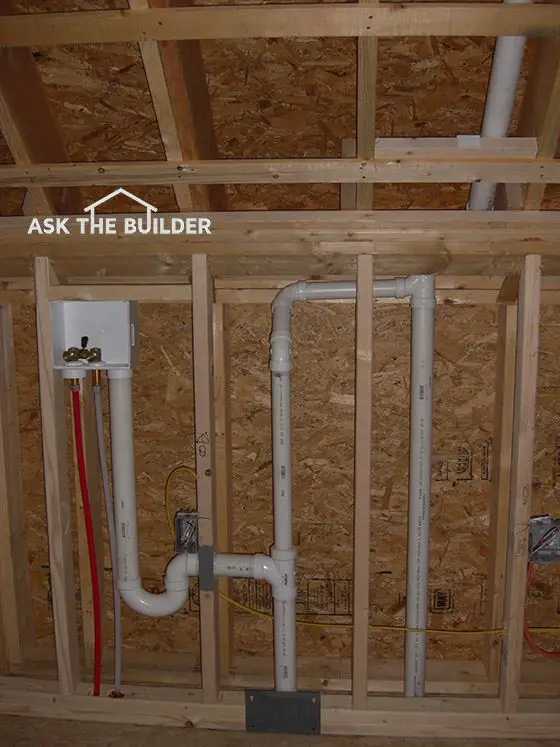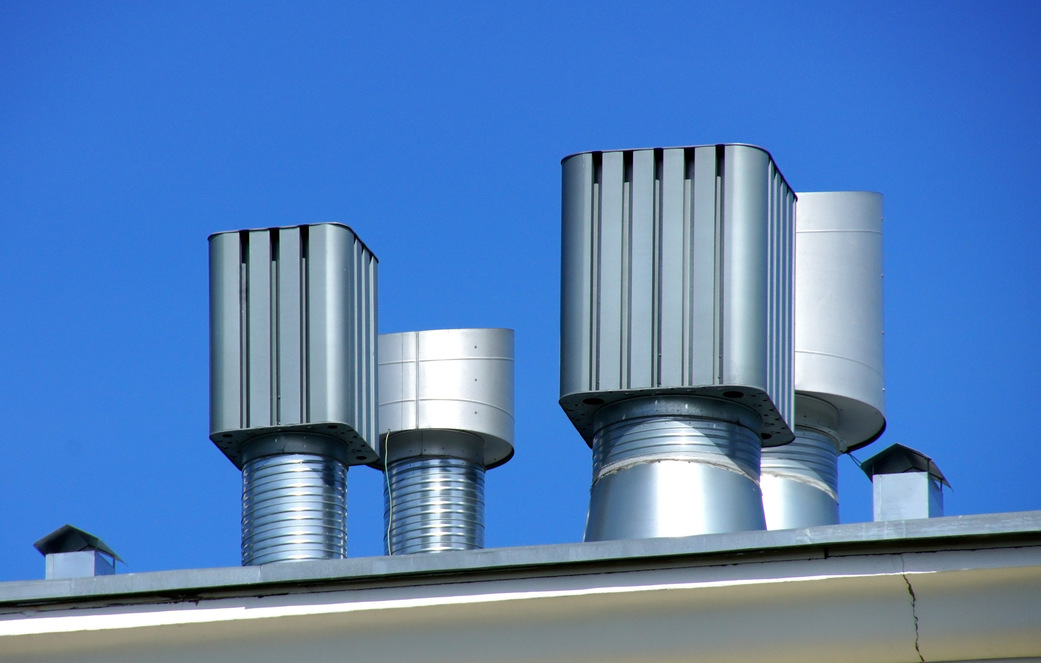Why Correct Ventilation Safeguards Your Plumbing System
Why Correct Ventilation Safeguards Your Plumbing System
Blog Article
What are your thoughts with regards to Essential Plumbing Vent Pipes: Understanding Their Role?

Correct ventilation in pipes systems is often overlooked, yet it is vital for preserving the functionality and safety and security of your home's plumbing. Ventilation helps control atmospheric pressure, avoid the build-up of unsafe gases, and make sure the effective removal of waste. In this overview, we will certainly explore the relevance of proper pipes ventilation, just how it functions, and the benefits it offers your plumbing system.
Understanding Ventilation in Pipes
Ventilation in plumbing describes the network of pipes that permit air to move through the drainage system. These vents offer numerous purposes, including regulating atmospheric pressure within the pipelines, protecting against drain gases from going into the home, and aiding in the smooth flow of wastewater.
How Ventilation Works in Plumbing Equipments
Air Pressure Regulation
Proper air flow preserves well balanced air pressure within the pipes system. When water flows via pipes, it displaces air. Without sufficient ventilation, this displacement can create adverse pressure, leading to reduce drains or siphoning of water from catches, which can cause undesirable odors to seep right into the home.
Preventing Drain Gas Build-up
One of one of the most important features of plumbing vents is to avoid sewage system gases, such as methane and hydrogen sulfide, from accumulating within the home. These gases can position significant health risks and are extremely flammable. Vent pipelines allow these gases to leave safely outdoors.
Helping in Waste Elimination
Air flow helps in the efficient elimination of wastewater by avoiding airlocks in the drain system. When air can stream easily through the vents, it enables water and waste to flow smoothly via the pipelines, lowering the risk of blockages and backups.
Sorts Of Pipes Vents
Main Stack Vent
The major pile air vent, additionally referred to as the vent pile, is the primary air vent in a plumbing system. It expands from the primary drainpipe line up with the roof, allowing gases to run away and fresh air to go into the system.
Branch Vent
Branch vents connect to the primary pile vent and serve individual fixtures, such as sinks, toilets, and showers. These vents guarantee that each component has appropriate ventilation to work effectively.
Air Admission Shutoff (AAV).
An Air Admittance Shutoff (AAV) is a one-way valve that permits air to go into the pipes system without the requirement for a traditional vent pipe extending through the roofing system. AAVs are typically utilized in restorations or areas where installing a basic vent is unwise.
Signs of Poor Air Flow in Pipes.
Slow Draining Fixtures.
If your sinks, tubs, or commodes are draining pipes slowly, maybe an indication of poor air flow. Insufficient air flow can produce a vacuum cleaner result, making it hard for water to drain effectively.
Gurgling Sounds.
Gurgling audios originating from drains are usually an outcome of air being sucked with water traps due to adverse pressure in the pipelines. This is a clear indicator of inadequate air flow.
Undesirable Odors.
Sewer odors inside your home are a red flag that your pipes system is not properly aerated. This can mean that drain gases are not being sufficiently aired vent outside, bring about potentially dangerous conditions.
Typical Air Flow Blunders.
Poor Vent Sizing.
Using undersized vent pipes can result in poor air flow and stress inequalities in the system. It's important to use vents that meet the details needs of your plumbing system.
Improper Vent Placement.
Positioning vents too far from the components they serve can decrease their efficiency. Correct placement guarantees that air can flow freely and successfully with the system.
Disregarding Code Demands.
Building regulations offer details guidelines for plumbing air flow. Ignoring these codes can cause a system that fails to operate appropriately and might lead to costly fixings or carcinogen.
Advantages of Proper Air Flow.
Improved System Effectiveness.
Effectively aerated plumbing systems run a lot more successfully, with less clogs, faster draining pipes, and much less strain on the pipelines. This effectiveness extends the life expectancy of the plumbing system.
Improved Air Top Quality.
By stopping sewage system gases from entering your home, appropriate air flow adds to much better interior air top quality, making your living environment healthier and much more comfy.
Avoiding Water Damages.
Adequate ventilation aids prevent water from being siphoned out of catches, which can result in drain gases entering the home and causing water damage in time.
Steps to Ensure Correct Air Flow.
Consulting Plumbing Codes.
Constantly get in touch with local pipes codes when developing or customizing your pipes system. These codes provide the essential standards for appropriate airing vent and ensure your system fulfills security criteria.
Regular Inspection and Maintenance.
Normal assessments can aid identify prospective air flow concerns prior to they end up being significant issues. Upkeep tasks, such as cleansing vent pipes and looking for blockages, are necessary for maintaining the system in good working order.
Professional Installation.
For brand-new setups or significant alterations, it's smart to work with an expert plumbing professional. They have the expertise to make sure the ventilation system is properly made and set up according to code.
Verdict.
Proper air flow is an essential part of any kind of plumbing system, making certain that it operates effectively and safely. By comprehending the significance of ventilation, acknowledging the indicators of poor ventilation, and taking steps to maintain your system, you can stop expensive issues and secure your home's air top quality.
Understanding the Role of Your Plumbing Vents in the Drainage System
The plumbing system in your home is more than just the kitchen sink, toilet, and bathroom. Some problems that arise within home plumbing are hard to detect because homeowners may not understand potential causes.
One part of the plumbing system that could cause you endless problems is the venting. The drain lines that run through your home and drain wastewater need proper venting to function properly. Faulty plumbing vents can lead to several problems that require the expertise of a plumber to check them out. Before finding experienced plumbing services, there are a few things to learn about plumbing vents.
Why vents are vital
Vents in the plumbing system lead to an outside area such as the roof or the back. The function of these vents is to keep sewer gases away from the drain pipes. They also establish seals in the drainage pipes that prevent the sucking back of waste gases into the home. Venting in the plumbing system also allows oxygen to get into the drainage system, which is an essential component in the breakdown of waste matter. The vents also ensure that the air pressure within the drainage system remains balanced, facilitating the flow of wastewater.
Possible problems
When the plumbing vents are problematic, one of the consequences is imbalanced water levels in the toilet. If you notice that the levels in the toilet bowl rise and fall all the time, then there may be something wrong with the vents.
Another issue is air bubble formation within the toilet. In most cases like these, the drain pipes are not receiving enough air. Lack of air pressure equalization is what leads to water flow problems. If you come across such issues in your home, make sure you call professional plumbers, such as the ones from Perfection Plumbing & Drain Cleaning Ltd.
Potential causes
Several scenarios can lead to some of the plumbing problems that homeowners suffer because of venting. One such scenario is the use of incorrectly sized vents. Usually, vents are the same size as the drain line to facilitate proper venting. Vents that are too small will lead to some plumbing issues. Another potential cause is fixtures that are not close enough to the vents. In this scenario, air forces itself through the traps of other fixtures, leading to gurgling sounds from toilets and sinks.
Most of these problems also happen with clogged vents. Tree leaves and debris can cause clogging when they make their way down a vent. Unclogging plumbing vents is a service that you can entrust to Saskatoon plumbers. They will know how to snake down vents and remove clogging stuck in fixtures.

I'm very occupied with What Is A Plumbing Vent & How Do They Work? and I really hope you liked our blog entry. Sharing is caring. Helping people is fun. I praise you for being here. Revisit us soon.
Visit My Site Report this page